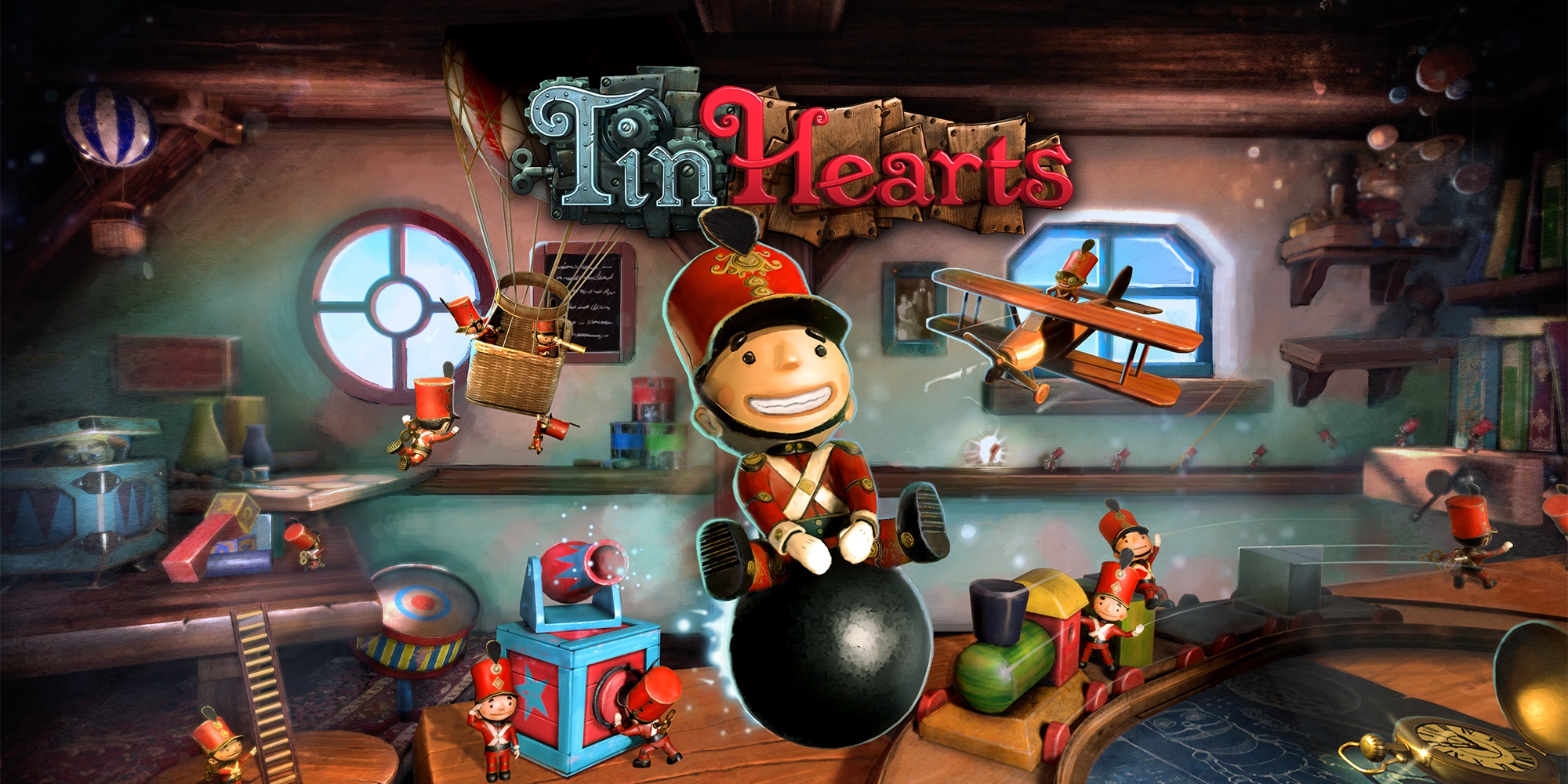Tin Hearts Review (PS5) – Wind-Up Joy
It’s easy to forget, with all the modern looter-shooter whizz-bangs, that quaint puzzle games are still a thing. In a world full of DLC, unfinished games and deluxe editions, something like Tin Hearts can come along and remind us that gaming has its pleasant times too.
A quaint little puzzle game with big ambition, Tin Hearts evokes that “sit back and relax/do some lateral thinking” type of game that was once popular. But don’t be fooled by the cute little tin men, there’s some challenge to be had in it too.
So sit back as I, your trusty critic, get annoyed and charmed in equal measure at trying to keep small, clockwork soldiers on their feet. March in-step with me and we’ll find out if it’s worth it.
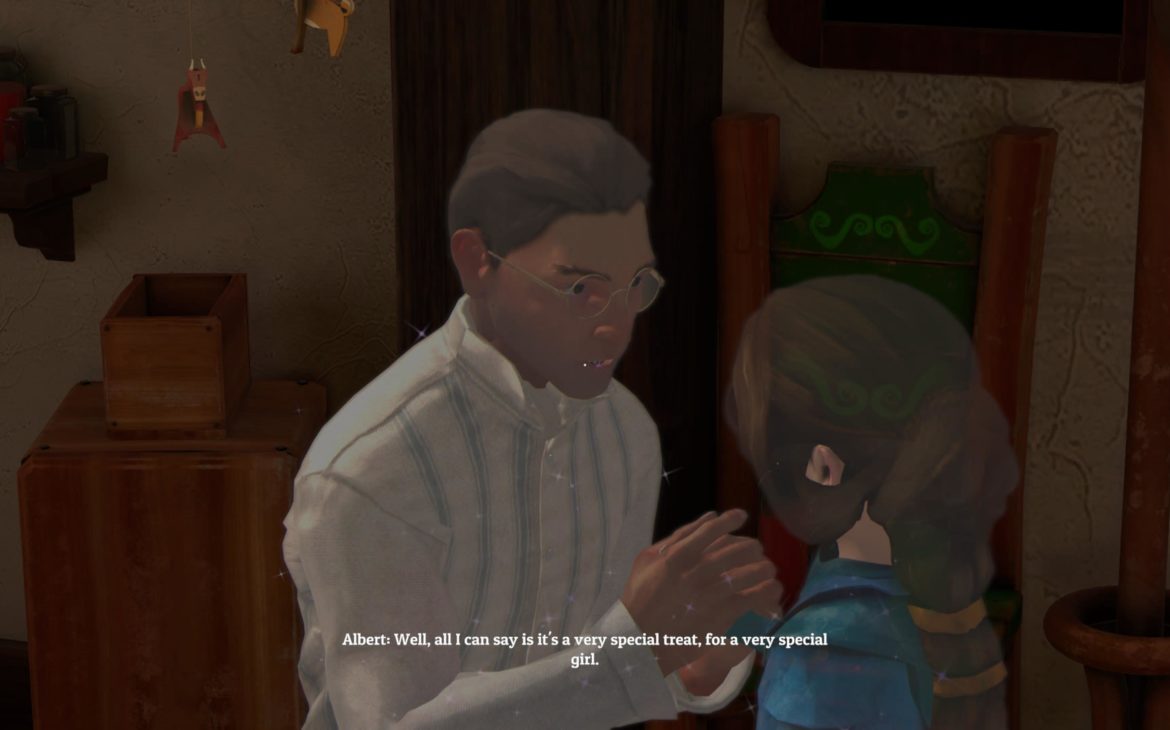
Tugging the Heart Strings Too
To set the scene: imagine a toymaker’s house. Not something modern like Toys ‘R’ Us, something older. Something vintage, full of old fashioned, hand-carved toys. Rocking horses, building blocks, toy drums and doll’s houses. That’s the era players are taken to, a land before Tomy electronics and the plastic toy boom that dominated afterwards.
The story, insofar as I can tell, see players take on the ethereal role of Albert J. Butterworth, renowned toymaker. Through his spirit, we see him, his wife and daughter through a series of events that’s… really hard not to spoil. Interspersed between puzzles, we see snippets of their lives at various intervals. It’s at times charming, others melancholic, but all-round quaintly British and charming. But then, it’s from a team of ex-Fable developers, so what would one expect?
As you can see from the trailer at the start, playing through certain stages of his life, from his retro toyshop to something a bit more steampunk all together. I would love to say I’ve gotten as far as to discover what that’s all about, but I’m keen to find out.
It’s also bolstered by a lovely score by Matthew Chastney. The name might not ring a bell, but the body of work should: trailers for Chernobyl, Bridgerton and, surprisingly, Joker to his credit. It makes for an ear-pleasing experience, which is nice for over fifty different levels of puzzle.
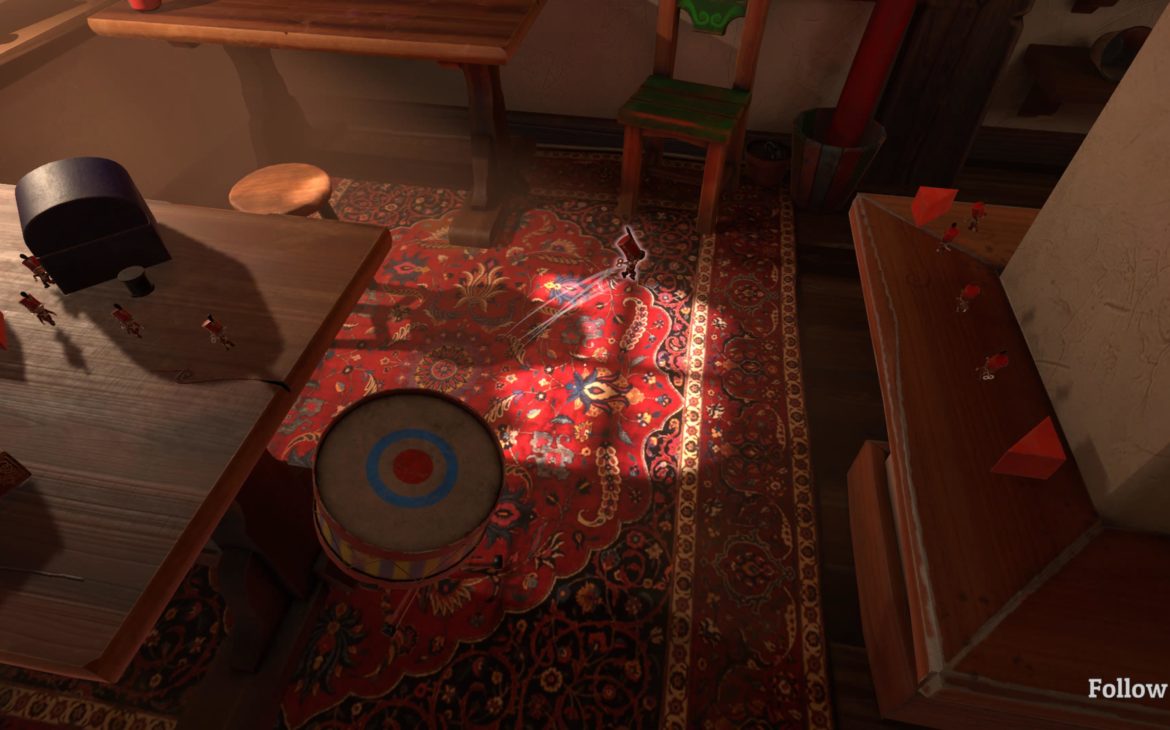
Step, Bounce, Step
Now, fifty puzzles may sound like a lot, but hear me out: these little soldiers are so a-dork-able that you’ll want to keep going. The basic premise for each puzzle, or level, or however one sees it, is to guide a set number of troops to an end goal. These clockwork heroes are but a simple toy: they will walk forever. It’s up to you, the player, to manipulate objects and guide their little feet across treacherous workshop terrain.
Starting off simple enough, with a few angled block placements for redirection, it’s enough of a brain training warm up. Rearrange some blocks, lay a path across two tables that involves a toy-drum-as-a-trampoline and guide them home, sounds easy enough.
But before long, it gets proper noodle-scratching. Drops off of ledges that will thin out your ranks, a balloon traversal system to take into account, these are but a couple of instigating factors. You’ll want to keep every toy-man alive to finish the level correctly.
So, in short, elephant in the room: yes, Tin Hearts is very similar to the DMA classic, Lemmings. The only major difference here is that you manipulate the surroundings to guide them, not the soldiers themselves. And it’s actually quite impressive how players do that.
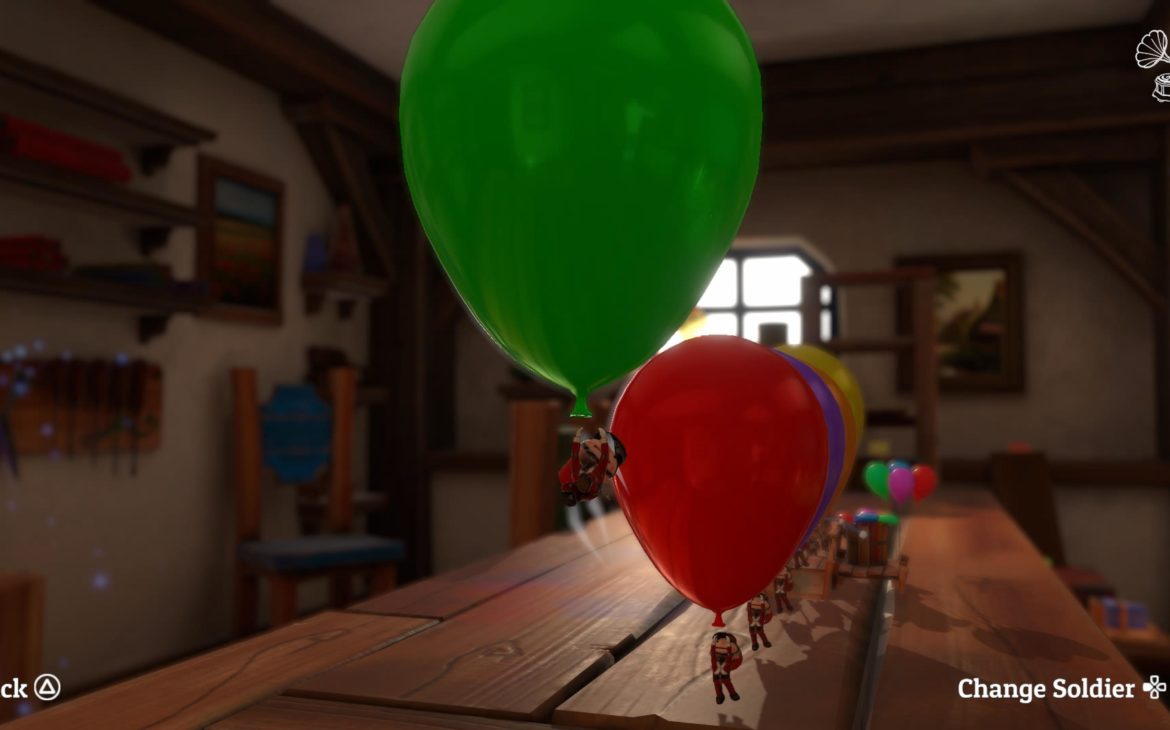
With These Magic Hands
Much like Lemmings, players don’t control the clockwork soldiers marching through workshop stages. They have one purpose: they march in whatever direction they’re pointing, you can’t stop them (well, you can, we’ll get to that). Instead, as mentioned earlier, players control Albert in spirit form, manipulating the environment instead to steer them to victory.
The main method of this is toy blocks, angled pieces that correspond to certain slots. Moon shaped symbol block to moon shaped block holder, for example. These can be scattered about a level, meaning players have to look outside the bigger puzzle, as it were.
Again, what starts off easy enough with a few direction changes soon becomes multi-level, pause-and-reuse-blocks challenge. Timing it right so that all of your little soldiers are on the right path, moving a block and redirecting them becomes a lesson in lateral thinking.
Fortunately, being of apparition-like nature, Albert can manipulate other objects that aid his progression.

Time Is On Your Side
As stages progress, and more soldiers are needed to be kept “alive”, there are times when it could become overwhelming. Fortunately, Tin Hearts does employ a few mechanics that make the experience less straining. Namely, being able to pause, fast-forward and rewind time.
So, if you’re losing little men to a precarious drop you didn’t see, you can just Sands of Time it and put them back on a tabletop. It also has another beneficial effect: pausing the time will show players the path their toys will take.
What this means, in principle, is that you can take the danger out of the challenge. Of course, players don’t have to use it, preferring to play in real time if they want. However, when the stages mean reusing blocks from earlier parts, it’s an easy habit to fall back on.
And lastly, players can make their soldiers march in double time if the path is right. Which admittedly is quite funny watching their little feet skitter across the worktops.
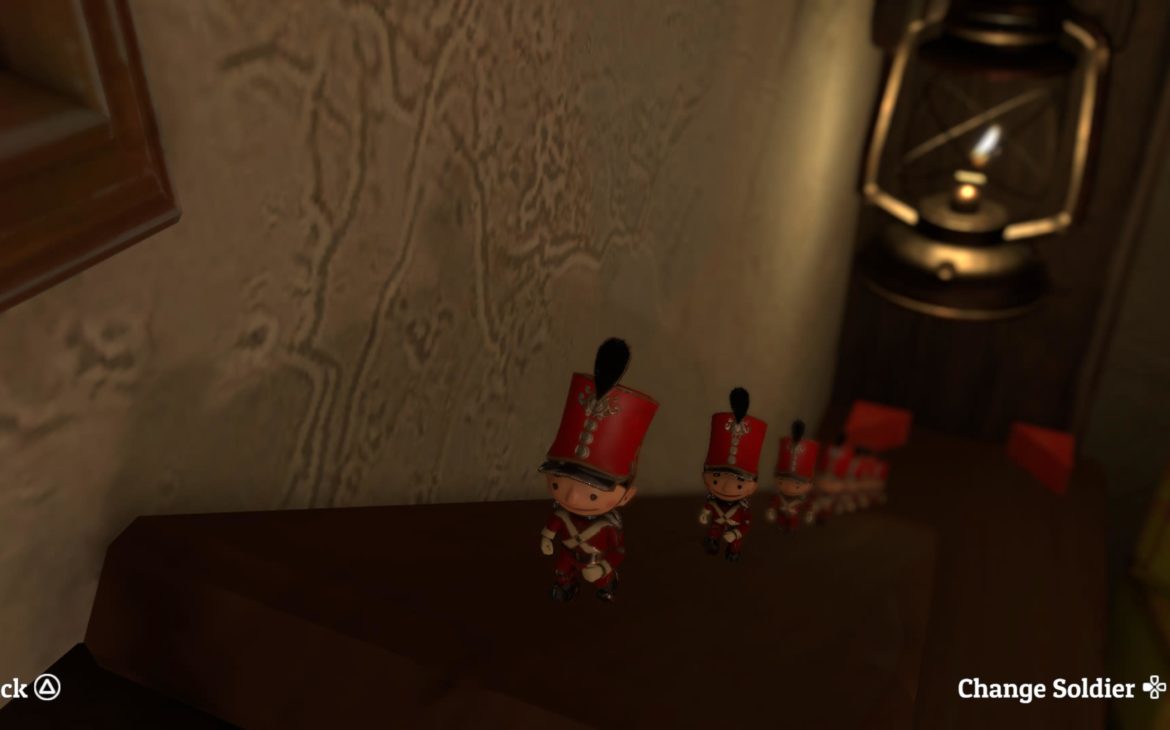
A Lick Of Paint
So, I’ve gotten this far without explaining how good the game does/doesn’t look. Well, here’s the thing: Tin Hearts looks crafted with love, yet does nothing to push any boundaries. But far from backhanded compliment that I normally snark with, I mean it nicely.
To wit: this game is bloody adorable. As previously mentioned, the music makes it all pleasant and charming, but with the visuals it’s a winning combo. As you can see above, it’s possible to zoom in and watch your little marching mates on their path. It serves no real purpose, other than a close up, but sometimes it’s nice just to let progress unfurl and watch them merrily plod on.
The voice acting, conversely, is a bit corny. As a British person, hearing the plumby, Railway Children accents is still cringe. But then, it’s a quaint little game and it fits the mood, so it gets a reluctant pass.
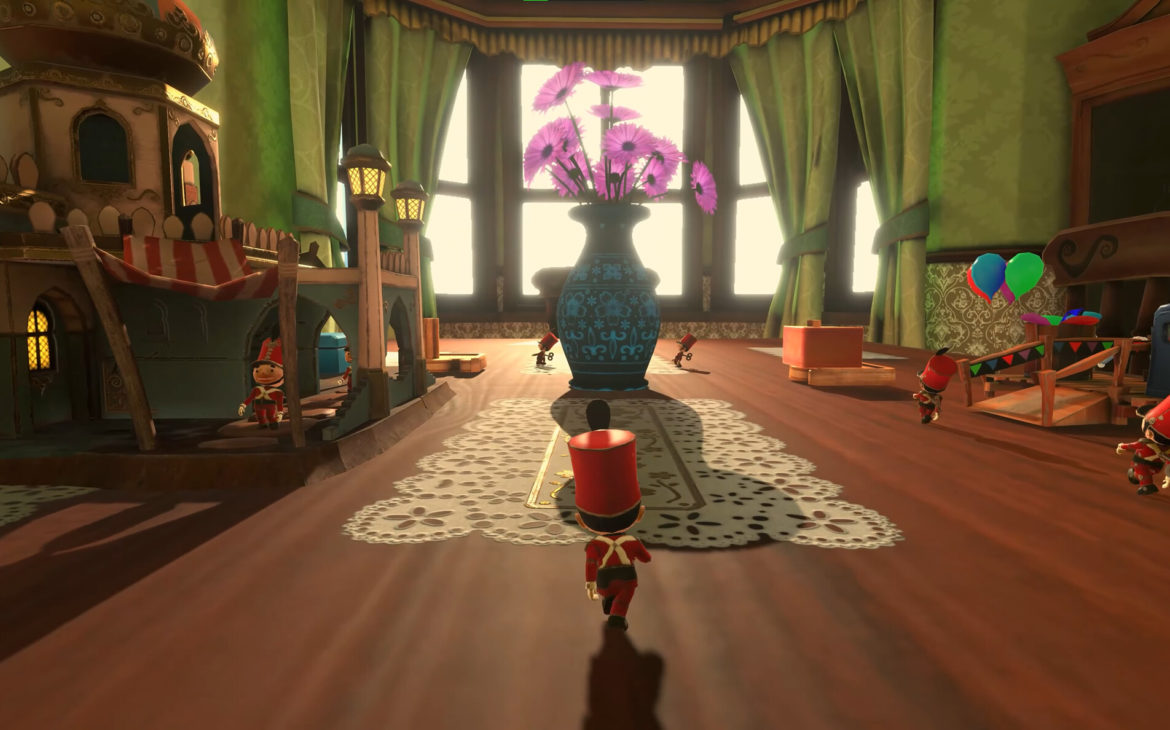
The Realms Of Limitation
I don’t have much to complain about when it comes to the core Tin Hearts experience. I feel mean picking fault, like I’m stamping on the toys and someone’s childhood. But alas, no game is perfect and there are some things that will grate after a while.
The biggest problem I had was the camera work. Now, I’m one of the chosen ones that uses invert, like a normal person, and that works fine when steering Albert/the camera around. But when one picks a block or object up, it’s not inverted. So I have to temper my roaming around and active puzzle solving as two separate entities, rather than flowing seamlessly.
The other gripe I have is that, despite Albert being in spirit form, he’s still bound by anything in the way. If it weren’t for time controls, having to leg it around tables, toys and obstacles would make it more awkward than it is. I’m not expecting full tilt camera control, but that’s what it feels like there should be with how objects are sometimes placed out of the way.
It can be fiddly, in essence. It puts an unusual reliance on the time controls, which effectively puts it in a state of “easy mode”. As I said earlier, unless ones chooses to play hardcore, it makes a lot of the challenge disappear. But then, this isn’t The Witness; it’s not designed to be the Hardest Game Ever™.
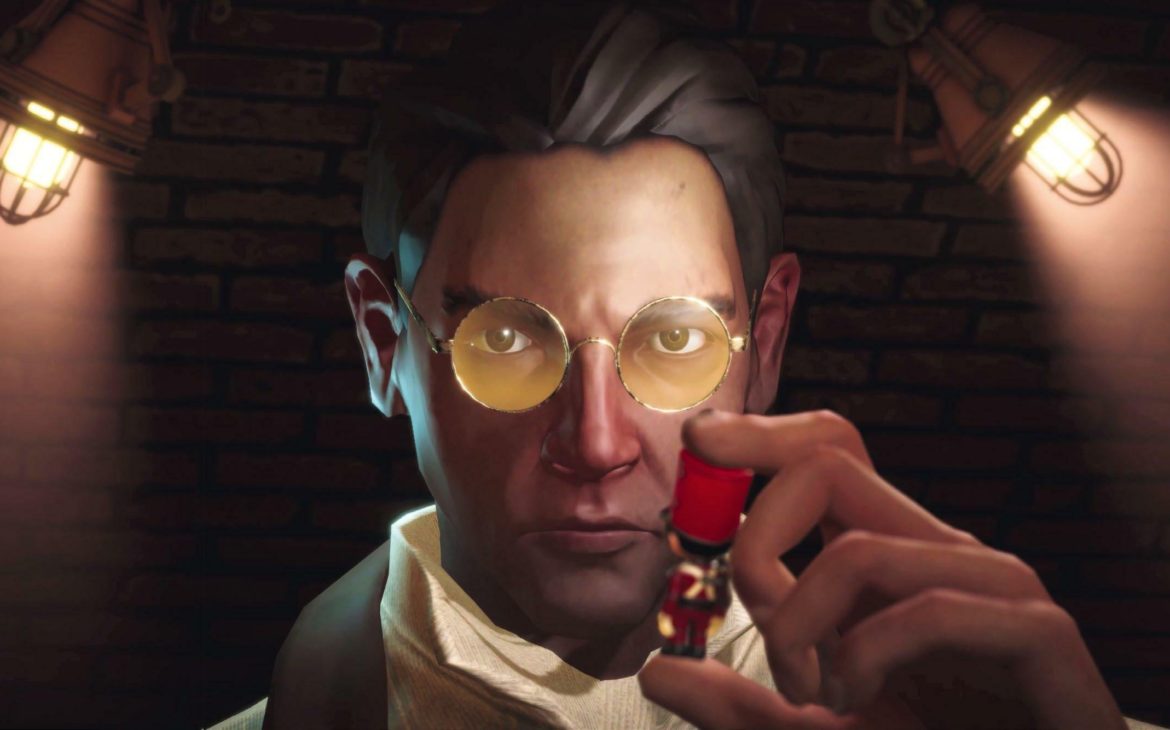
Think Outside The Toy Box
In conclusion, Tin Hearts is fun, if a little bit easy. With fifty levels to march through, there’s five acts to unlock the whimsical tale of Albert and his family. There’s even some nifty, level/context-based trophies to seek out, should players want to explore. Alternate puzzles routes, bouncing off certain objects, that kind of thing.
All in all, it’s charming, much as you’d expect from some of the minds behind Fable. Again, without wishing to spoil, the story is engaging enough (even if I’m not massively far into it) to want to see it through. There’s challenge there for those who want it, but not enough to cripple progress like a 90’s esotric point and click game.
It’s also got that LittleBigPlanet level of charm for anyone wanting to get their kids into some developmental brain scratching too. As well as teaching them consequences for not looking out for their fellow [tin] man.
Chock full of cuteness and charm, Tin Hearts also unravels into a well thought out and crafted puzzler experience. There are means to make it easier, should you wish, but also the option of playing it without aid to challenge those that seek it.

Tin Hearts is available now on PlayStation 4 & 5 (reviewed on latter), Xbox One and Series S|X, Nintendo Switch and PC via Steam.
Developer: Rogue Son
Publisher: Wired Productions
Disclaimer: In order to complete this review, we were provided with a promotional copy of the game. For our full review policy, please go here.
If you enjoyed this article or any more of our content, please consider our Patreon.
Make sure to follow Finger Guns on our social channels –Twitter, Facebook, Twitch, Spotify or Apple Podcasts – to keep up to date on our news, reviews and features.
